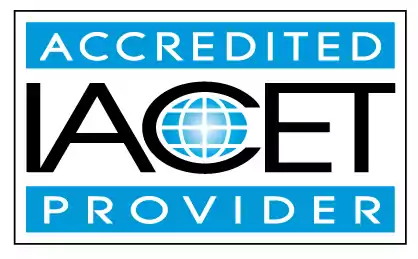Define and identify common signs and behaviors of children and youth with conduct disorder.
Learn to define and identify common signs and behaviors of children and youth with conduct disorder and Autism Spectrum Disorder. Gain valuable insights and knowledge in early childhood education and child care centers to better support children's development and well-being.Trainings incorporating this outcome
Proficiency Level
120 hours courses
102 hours courses
45 hours courses
30 hours courses
2 hours courses
Related Outcomes
- Define and identify common signs and behaviors of children and youth with Autism Spectrum Disorder.
- Define and identify common signs and behaviors of children and youth with ADHD.
- Define and identify common signs and behaviors of children and youth with fetal alcohol syndrome.
- Define and identify common signs and behaviors of children and youth with developmental disabilities.
- Define and identify common signs and behaviors of children and youth with cerebral palsy.
- Define and identify common signs and behaviors of children and youth with depression.
- Define and identify common signs and behaviors of children and youth with hearing loss.
- Define and identify common signs and behaviors of children and youth with hemophilia.
- Define and identify common signs and behaviors of children and youth with fragile x syndrome.
- Define and identify common signs and behaviors of children and youth with anxiety.
- Identify appropriate practices for identify and demonstrate an children: Identify examples of appropriate activities for different ages
- Identify common mental health disorders in children and the importance of early intervention.
- Identify appropriate practices for identify and demonstrate an children: Define Developmentally Appropriate Practice
- Identify appropriate practices for identify and demonstrate an children: Identify importance of individual planning
- Define resilience and identify ways it helps young children overcome toxic stressors.
- Identify appropriate practices for identify and demonstrate an children: components of a lesson plan
- Define and identify the components of developmentally appropriate practice for children aged 2 to 5.
- Identify children and youth with demonstrated/potential giftedness.
- Identify common interaction strategies to help promote a positive classroom environment for young children.
- Identify the signs of illness in children and describe when a child should be excluded from care
Related Articles
- Nurturing Kindness: Fostering Prosocial Behavior in Young Children
- Why Children's Books Are Important for Children’s Learning
- Promoting Positive Behavior in Young Children
- Identifying Developmental Milestones in Children
- Strategies for Effective Discipline Techniques for Addressing Common Behavioral Challenges in Childcare
- How to Support Children with Challenging Behaviors
- Wobble Boards and Balance Beams: How Physical Movement Supports Somatic Healing in children
- A humorous look at children's nervous system: Why stretching and breathing are key
- Not Just a Bad Day: 10 Subtle Signs Your Kid Might Be Battling Depression and AFSP walks near you
- Fun Ideas for Enjoying a Relaxing Labor Day while Keeping the Children Entertained
- Balancing Routine and Flexibility: Creating a Structured Yet Adaptable Schedule for Children
- Fostering Resilience in Children: A Key Role for Child Care Providers
- Trauma and Tantrums: How Stress Shapes Behavior (and How to Help)
- Growing Humility & Gratitude Instead of a Me-Me-Me Mentality in Children
- The Secret Life of Crayons: What Children’s Coloring Choices Reveal About Their Developing Personality
- How to Promote Healthy Eating Habits in Young Children
- Trauma-Informed Sleigh Rides: Supporting Children Through Play
- Cracking the Code of Children's Sleep (And Your Sanity)
- Is Trauma the Same for All Children?
- Common Childhood Emergencies and How to Handle Them: A First Aid Primer
 12 CEUs
12 CEUs